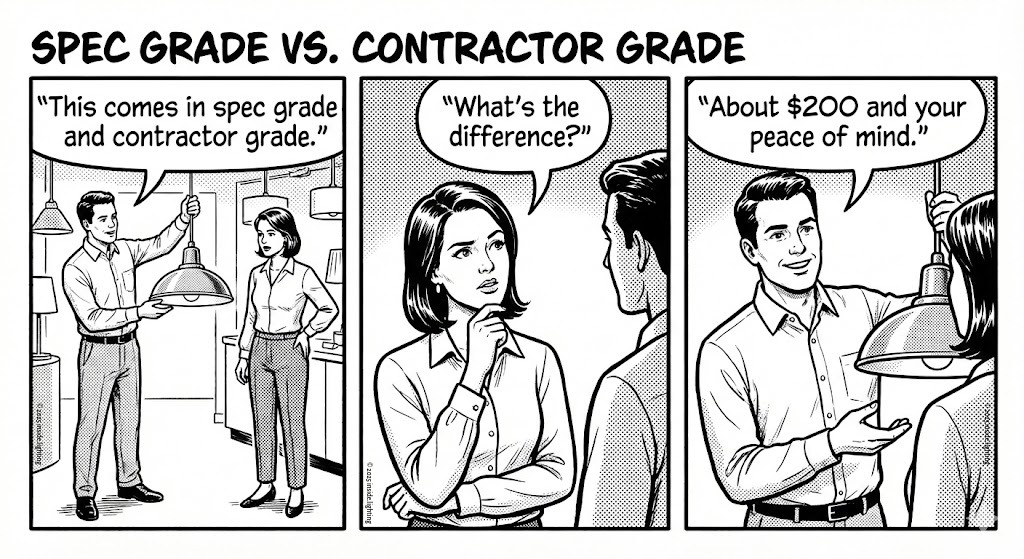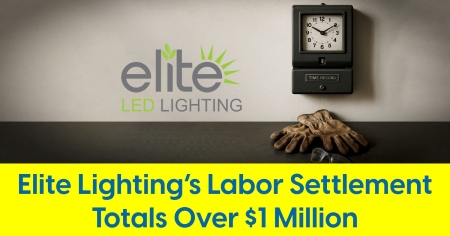August 28, 2024
Lighting People: On the Move | August 2024
Author: Brooke Ziolo, with contributions from Al Uszynski
Career moves of lighting people whom you may know
In the ever-evolving world of lighting, it's essential to stay updated with the industry's dynamic shifts. Whether it's the innovation of new technologies, shifts in market trends or the movement of industry professionals, the lighting sector remains a vibrant arena full of potential and growth.
Staying abreast of the movements of lighting people is not just about knowing who's who, but also about understanding the broader implications these shifts can have on business strategies, partnerships and industry alignments.
It’s been a busy time for people moving up and moving on to new, exciting opportunities. Below is a rundown of some career changes that some lighting people have recently made.
Promotions |
Click on column heading to sort ascending/descending
| Lighting Person ▲▼ | Company ▲▼ | Role |
|---|---|---|
| Mimi Adams | Halco Lighting Technologies | Product Compliance and Content Manager |
| Sabrina Asquith | Lighting Services Inc. | PMO Lead |
| Alec Beavers | Vertical Lighting + Controls | Director of Operations |
| Brendon Van Campen | Lutron Electronics | Vice President, Sales |
| Xiaoxiao Cui | BR+A Consulting Engineers | Lighting Designer |
| Kristin Dees | Acuity Brands | Chief of Staff, Intelligent Spaces Group |
| Alexandria Garin | Lutron Electronics | Customer Service Supervisor |
| Hilary Giggs | Lutron Electronics | VP Sales, North America Luxury Residential |
| Abby Gomes | Amico Lights | Senior Marketing Lead |
| Tanya Grim | Lighting Environments | Lighting Applications Supervisor |
| Katrina Harvey | WSC Lighting Systems | Vice President |
| Nate Heiking | Kenall Mfg | Director of New Product Development |
| Rachel Hicks | Acuity Brands | Director Project Management |
| Monika Kalyani | GVA Lighting, Inc. | Regional Sales Manager |
| Chris MacMillan | WOW Lighting and Controls | Manager, Specification Sales |
| Steve Merrick | ASD Lighting Corp | Regional Manager- Northeast |
| Lauren Schwade | Mazzetti | Associate Principal, Healthcare Lighting |
| John Sloane | Buro Happold | Senior Lighting Designer |
| Rachel Thomas | Lutron Electronics | Sales Leader |
| Chris Walker | Smart Lighting Solutions | Director of Quotations |
Submit a Lighting Person on the Move for our next feature »
Recent Moves |
Click on column heading to sort ascending/descending
| Lighting Person ▲▼ | Company ▲▼ | Role |
|---|---|---|
| Luis Acena | Samsung Electronics America | Senior Product Marketing Manager |
| John Alba | Retro Spec Lighting Group | Principal |
| Holly Andre | Visual Comfort & Co. | Sr. Business Development Specialist |
| Theressa Asis | Specialty Lighting Industries | Regional Sales Manager |
| Ryan Barreintos | SCI Lighting Solutions | Quotations Representative |
| Kayla Bennett | FRM Lighting & Controls | Inside Sales |
| Christopher Buckelew | FRM Lighting & Controls | Specification Sales |
| Jason Buckner | Lumenwerx | Central Regional Sales Manager |
| Tassio Carvalho | Acuity Brands | Senior Director for Data Science and Artificial Intelligence |
| Cory Clarke | Current Lighting | Controls Applications Engineer |
| Troy Dockery | ALW (Architectural Lighting Works) | Technical Application Sales - Controls Lead |
| Mike Donovan | Solais Lighting | Regional Sales Manager |
| Brian Drew | Steinel | Northeast Regional Manager |
| Juliana Ejsmont | Leviton | Northwest Regional Manager |
| Nicole Eng | Visual Terrain, Inc. | Senior Lighting Designer |
| Tod Fisher | Lighting Systems | Specification Sales |
| Doug French | FSC Lighting | Territory Sales Manager |
| Curt Good | Quantum Lighting Group, Inc. | Sales Manager |
| Peter Hegedus | LUX Dynamics | National Sales Manager |
| Samuel Hewett | Targetti USA | Regional Sales Manager |
| Abby Jean | LightStanza | Director of Operations |
| Bryce Judd | Savant Systems | Chief Revenue Officer |
| Angela Jungbauer | Quantum Lighting Group | Associate Principal |
| Jess Kaller | Deltalight North America | Strategic Accounts Manager |
| Maksym Kapshuk | GVA Lighting, Inc. | Project Manager – (Region) |
| Ashley Kelly | The Lighting Digest | Account Executive, Contractor |
| Stan Kelly | FRM Lighting & Controls | Quotes |
| Nikhil Kochar | LSI Industries | Director of Innovation & VA/VE |
| Nestor Kurtz | Penn Lighting Associates | Outside Sales |
| Sherri Lake | C&O Sales | Lighting Quotations |
| Jonathan Lebovic | Available Light | Senior Associate |
| Clifton Louis | ETi / Aura Lighting | Western Regional Sales Manager |
| John Martin | Lightswitch | Director of Business Development |
| Joel Moss | Omnilight | Regional Sales Director |
| Mason Mueller | Acuity Brands | Leadership Program, Supply Chain |
| Chris Mydock | Florida Lighting Associates | Outside Sales |
| Allison Norgaard | Forman & Associates | Specification Sales |
| Lori Oliver | Thomas Harris & Co, Inc. | Specification Sales |
| Michael Peters | MaxLite | Regional Director of Sales & Business Development |
| Neal Polaine | Keystone Technologies | Specification Sales Manager |
| Jami Radcliffe | Eckart Supply | Lighting Quotations |
| Marisa Rader | Lighting Systems | Specification Sales |
| TK Robinson | Lighting Group Utah | Principal |
| Mark Rorrison | TMS Lighting Inc. | Western Regional Sales Manager |
| Kevin Rose | Selux Corporation | Business Development Manager |
| Shane Seery | ALW (Architectural Lighting Works) | Regional Sales Manager |
| Nicholas Signorelli | Control Force | Head of Field Service |
| Julie Slone | Tennessee Lighting Sales | Specification Sales |
| Shanna Snow | Hartranft Lighting Design | Associate |
| Inez Sosa | SLP Lighting | Product Manager |
| Carl Stewart | Delta Light Group North America | Vice President, Sales |
| Molly Stowe | Biella Lighting Design | Lighting Designer |
| Jason Strommen | Luminii | Product Manager |
| Christopher Szabo | FRM Lighting & Controls | Distributor and Contractor Sales |
| Michael Thomas | Lumasmart | Chief Revenue Officer |
| Randy Thomas | SDA Lighting & Controls | Director of Healthcare Tech & Building Controls |
| Mark Tresp | Green Frog Systems | Regional Account Executive |
| Kelly Valdivia | FRM Lighting & Controls | Inside Sales |
| Chris Veira | Apex Lighting | Outside Sales |
| Justin Walker | Signify | R&D Group Manager |
| Mica Wang | AKLD Lighting Design | Lighting Designer |
| Steve Ward | FRM Lighting & Controls | Specification Sales |
| Andrew Weatherford | Rig-A-Lite | Southwest TX / NM Regional Sales Manager |
| Jeremy Wilkinson | Leviton | Director of Business Development and Product Management |
| Nehal Youssef | Diversified Group | Specification Sales Manager |
Are you a Lighting Person on the Move? »
Brooke Ziolo is President of Egret Consulting Group – the largest recruitment firm dedicated to serving the electrical and lighting industries.
NOTE: While we do our best to ensure accuracy, most of the information above is aggregated from company announcements or individual postings on LinkedIn and other social media. Please check with the employer or the individual to verify employment status and official title. If you see an error please contact us so we can address it. Thank you.











